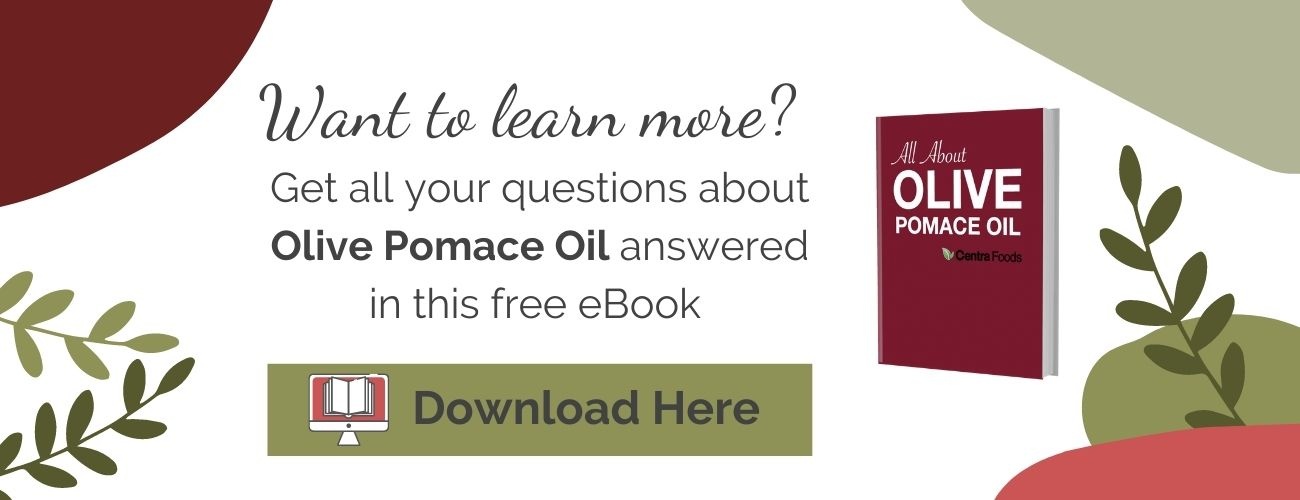
There are a few grades of olive oil that are commonly used in manufacturing, which you may not recognize from a retail shelf. While you will most often see Extra Virgin Olive Oil on a retail shelf, there are other (lower) grades of olive oil that are sometimes used in manufacturing.
If you are currently researching bulk olive oil for food/body care production or you are a manufacturer, it will help to know the differences between these different grades. Today, we will walk through how these olive oil grades are each made, along with how they compare to each other.
Refined Olive Oil
Refined olive oil comes from virgin olive oil that has been refined (hence the name). Virgin olive oil is produced by spinning or squeezing the olives in a first cold press. However, virgin olive oil isn't quite up to the quality of extra virgin olive oil, and may miss the mark on flavor, have had too much sun exposure.
This virgin olive oil is refined using a high heat, steam and earthen clay process. This refining process creates mild, light tasting, and more stable oil. The process of refining also (debatably) removes many of the health benefits -- like the cancer fighting polyphenols -- that extra virgin olive oil offers.
On a retail shelf, refined olive oil is typically labeled as "light" or "extra light" olive oil. In the bulk world, it is referred to as "refined olive oil" which is the technical USDA and IOC grade name.
Pure Olive Oil
Pure olive oil is grade which is technically a blend -- comprised of refined olive oil and extra virgin; the common blend ratios are 85 refined and 15 extra virgin, though they can range from 70/30 to 99/1. The proportions determined by the supplier/manufacturer and can account for some of the price differences in pure olive oil across the market.
Pure oil has a milder taste and color than extra virgin but not as light as the refined olive oil. With pure olive oil, you can typically taste a mild, faint flavor but nothing as strong as with an 100% extra virgin olive oil.
The USDA / IOC grade name for this oil is technically just "olive oil". In both retail and bulk sectors, it's often marketed as "Pure" Olive Oil (sometimes also referred to as "classic").

Olive Pomace Oil
Pomace is pulp made from the olive pit and already-squeezed olive fruit. It is an oil that is extracted from the pomace of the olive. When an olive is picked, it is ground into a paste that is squeezed or spun to get the initial oil out. The dry pulp leftover is called the olive pomace.
A solvent is added to the pomace to extract any remaining oil. Then the solvent is removed, and the remaining Pomace Oil is refined. This is a similar process used to manufacture any seed oil like conventional canola or soybean oil.
It is is commonly used in both food and body care manufacturing around the world.
Comparing the Grades
Refined vs. Unrefined: Each of these grades (Refined, Pure and Pomace) are all refined using a high heat, steam and earthen clay process. This removes the color and flavor from the oil making it lighter and more consistent. They also have a higher heat tolerance than other unrefined olive oils.
Solvent Extracted vs. Pressed: Refined and Pure Olive Oils both originate from virgin olive oils that have been mechanically pressed, squeezed or spun. No chemicals are used in the extraction of these oils. Olive Pomace Oil, however, is removed from the ground pomace using a solvent -- typically hexane.
Price Comparisons: Olive Pomace Oil is the lowest grade of olive oil and is the cheapest by far. Refined and Pure Olive Oil are quite similar in price, usually (in good harvests) falling between the price of Extra Virgin and Pomace. In a bad harvest time, prices of Pure and Refined can rise up to very close to the price of Extra Virgin Olive Oil due to lack of supply.
Want to learn more? Check out Olive Pomace Oil: The Ultimate Guide for a deep dive on everything Olive Pomace Oil.
Topics: Olive Pomace Oil, Comparing Oils, Pure Olive Oil, Olive Oil













